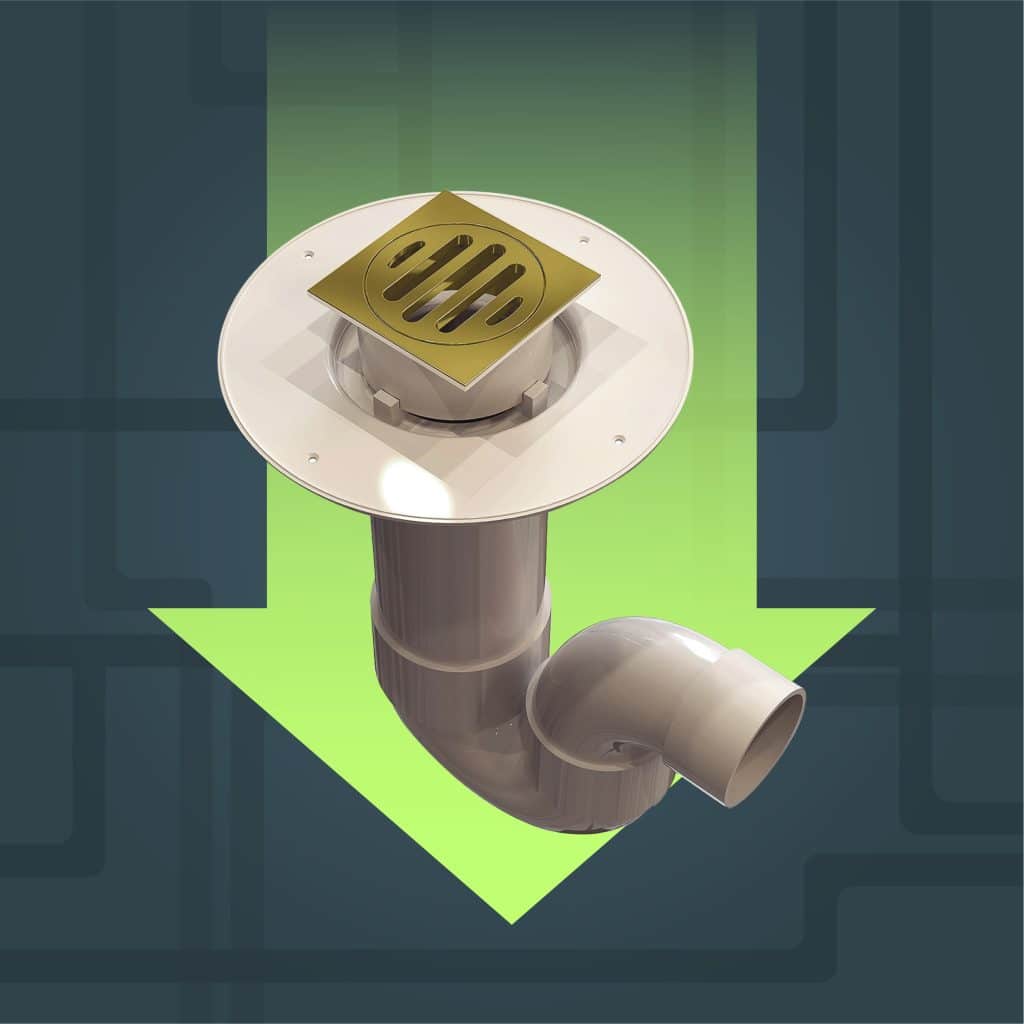
When designing a bathroom, ensuring effective drainage is a crucial point as drainage not only enhances the functionality of the shower but also prevents potential water damage. Here are some best practices for ensuring effective drainage in a tile shower system, tailored specifically for architects working in New Zealand.
Understanding the importance of drainage
Effective drainage in a tile shower system is crucial for several reasons:
- Prevents water pooling: Water accumulation can lead to slips and falls, posing safety risks.
- Protects the structure: Standing water can seep through tiles, damaging the underlying structure and leading to costly repairs.
- Ensures hygiene: Proper drainage helps in maintaining a clean and hygienic shower environment by preventing mold and mildew growth.
Adhering the New Zealand Building Code
The New Zealand Building Code (NZBC) provides comprehensive guidelines to ensure that shower systems are designed and constructed to manage water effectively. Compliance with the NZBC is mandatory, and it sets the minimum performance standards that all building work must meet.
Key Requirements
Slope of the Shower Floor
The shower floor should have a sufficient slope to direct water towards the drain. According to the NZBC E3 Internal Moisture, “where the shower floor has no upstand or where a wall, screen, door or curtain is omitted, the floor shall have a fall of no less than 1:50 towards the floor waste. The fall shall apply to the floor area within a radius of 1500 mm taken from a point vertically below the shower rose, or from any wall within that radius.”
Waterproofing
Effective waterproofing is crucial to prevent water from penetrating the subfloor and walls. The Wet Area Membrane Standard (AS/NZS 4858) provides detailed requirements for waterproofing wet areas. Ensure that the waterproof membrane extends at least 1500mm up the walls and is properly sealed at all joints and corners.
Drainage Outlet Positioning
Position the drainage outlet at the lowest point of the shower floor to ensure water flows naturally towards it. Central or linear drains are commonly used in New Zealand and are effective in managing water flow.
Best Practices for Ensuring Proper Water Drainage
While adhering to the NZBC and the Wet Area Membrane Standard is essential, here are some best practices to enhance drainage in tile shower systems:
1. Choosing the Right Drain Type
There are various types of drains available, each with its advantages:
Point Drains: Commonly located at the center of the shower floor, they require a four-way slope.
Linear Drains: Placed at the perimeter of the shower or along one side, they require a single-plane slope, making them ideal for larger showers or barrier-free designs.
2. Ensuring Adequate Slope
Ensure the shower floor has an adequate slope to the drain, typically 2-3%. This prevents water from pooling and directs it efficiently towards the drain.
3. Proper Installation of Waterproof Membranes
Apply waterproof membranes meticulously to prevent leaks. Ensure all corners, joints, and penetrations are sealed effectively.
4. Regular Maintenance and Inspection
Advise clients to regularly inspect and maintain the shower drains to ensure they remain clear of debris. Clogged drains can lead to water pooling and potential damage.
In Conclusion
Ensuring proper drainage in a tile shower system is essential for both functionality and durability. By adhering to the New Zealand Building Code and following best practices, architects can design shower systems that effectively manage water and prevent damage. Always refer to the NZBC and the Wet Area Membrane Standard for detailed requirements and consider these best practices as guidelines to enhance your designs. With careful planning and attention to detail, you can create shower systems that are both efficient and aesthetically pleasing.
Need help choosing your next tile shower?
Give us a call on 0508 639 5463 or email us at info@newline.co.nz for more information.

